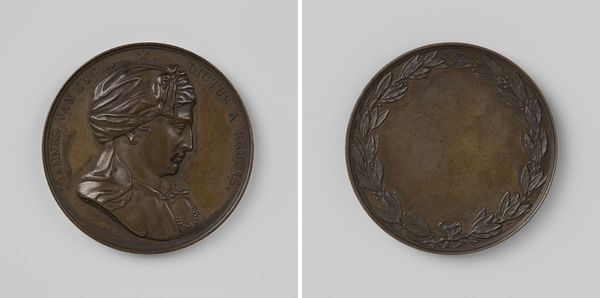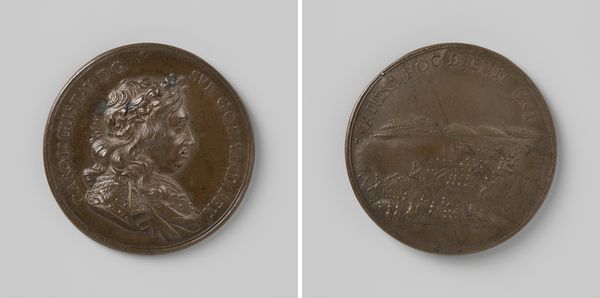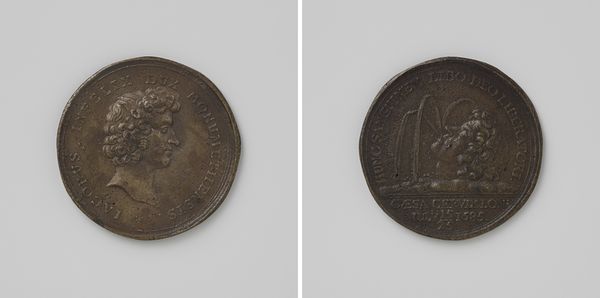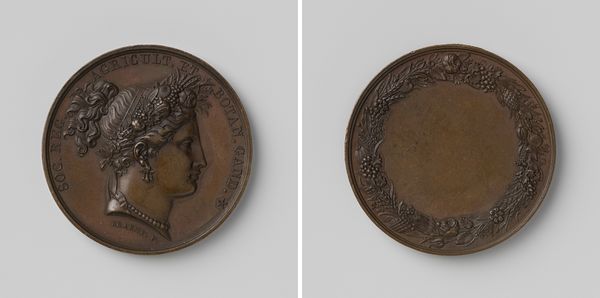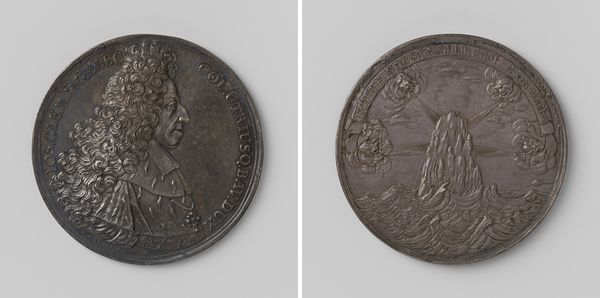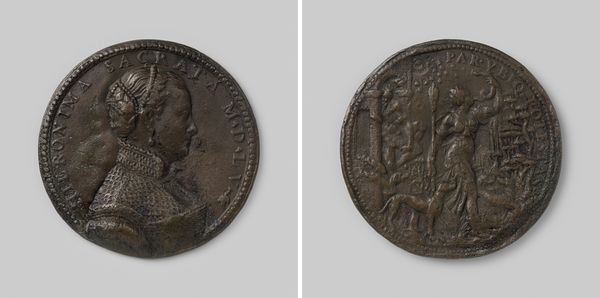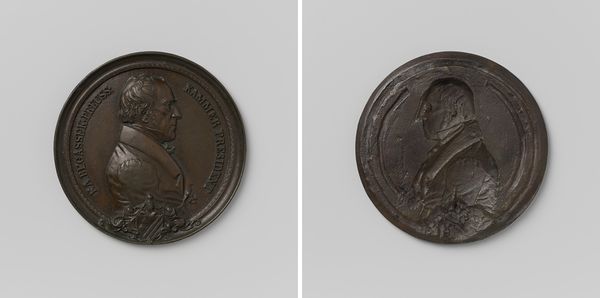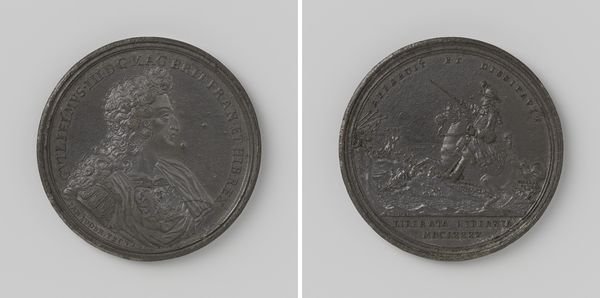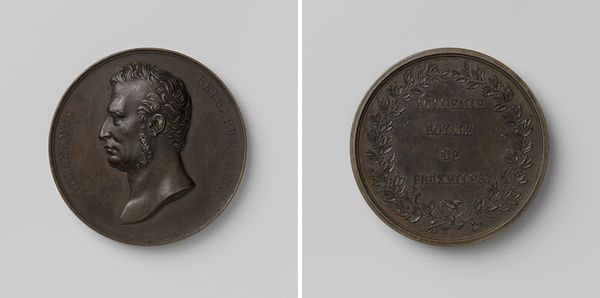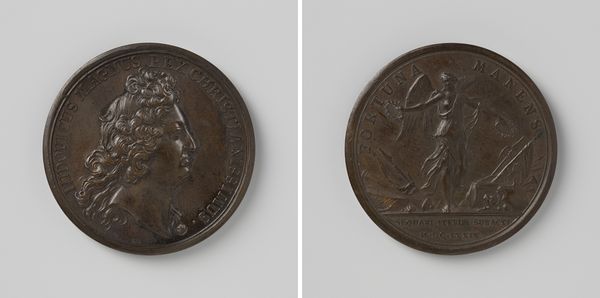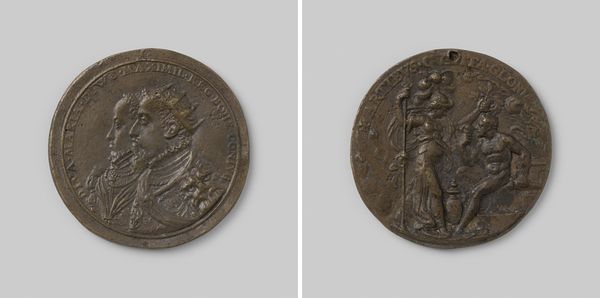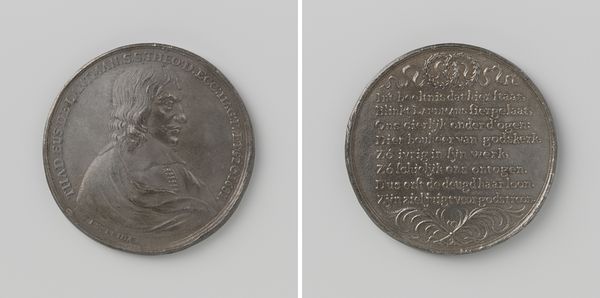
Overwinning van de Fransen bij Kassel, ter ere van de hertog van Orleans 1684 - 1700
0:00
0:00
metal, relief, sculpture
#
portrait
#
baroque
#
metal
#
sculpture
#
relief
#
sculpture
#
history-painting
Dimensions: diameter 5.6 cm, weight 50.95 gr
Copyright: Rijks Museum: Open Domain
Curator: What strikes me immediately is how this simple medal portrays immense power, like a historical event compressed into something you could hold in your hand. Editor: Exactly. What we're looking at is a piece titled "Overwinning van de Fransen bij Kassel, ter ere van de hertog van Orleans," which translates to "Victory of the French at Kassel, in honor of the Duke of Orleans." It likely dates between 1684 and 1700. The artist behind this metal relief is Nicolas Delahaye. Curator: It’s interesting to see what victories are chosen for commemoration. Kassel…was it really that important to Louis XIV’s expansionist aims? What statements were being made about French power through distributing such objects? Editor: I think these commemorative pieces offer insights into the construction of national identity and the dissemination of propaganda. Bronze lends an air of authority. And think about the skill involved in miniature relief sculpting! It elevated artisans even while promoting aristocratic authority. Curator: Absolutely. And the way Delahaye uses the material—it's not just bronze, it's *worked* bronze. Each strike to create this kind of detail showcases skilled labour and technique while memorialising those with real political power and sway. This is where we start to blur the lines of “fine art.” The choice of medium reinforces these established hierarchies. Editor: Precisely. Looking at the detail, especially the crowded scene of battle on the reverse, I'm struck by how such a small object encapsulates so much. The artistic style chosen clearly evokes that Baroque style. Think of how medals, prints, and even tapestries broadcast political narratives. Curator: But do these medals really impact the larger socioeconomic landscape? Were these things readily available, or was its purpose instead something much more selective for those with certain political affinities or monetary means? These are tools for specific contexts. Editor: I suppose what I consider most are things like distribution—were these purely gifts for nobility or did merchants acquire them, therefore placing value onto material and allowing an understanding of these things through society? That would really transform its public role. Curator: On one hand, it’s incredible how material and artistic labor came together for purposes of shaping public memory. Editor: And I’m fascinated by how it played into creating cultural memory in the first place and by what that piece of cultural identity really sought to communicate.
Comments
No comments
Be the first to comment and join the conversation on the ultimate creative platform.
